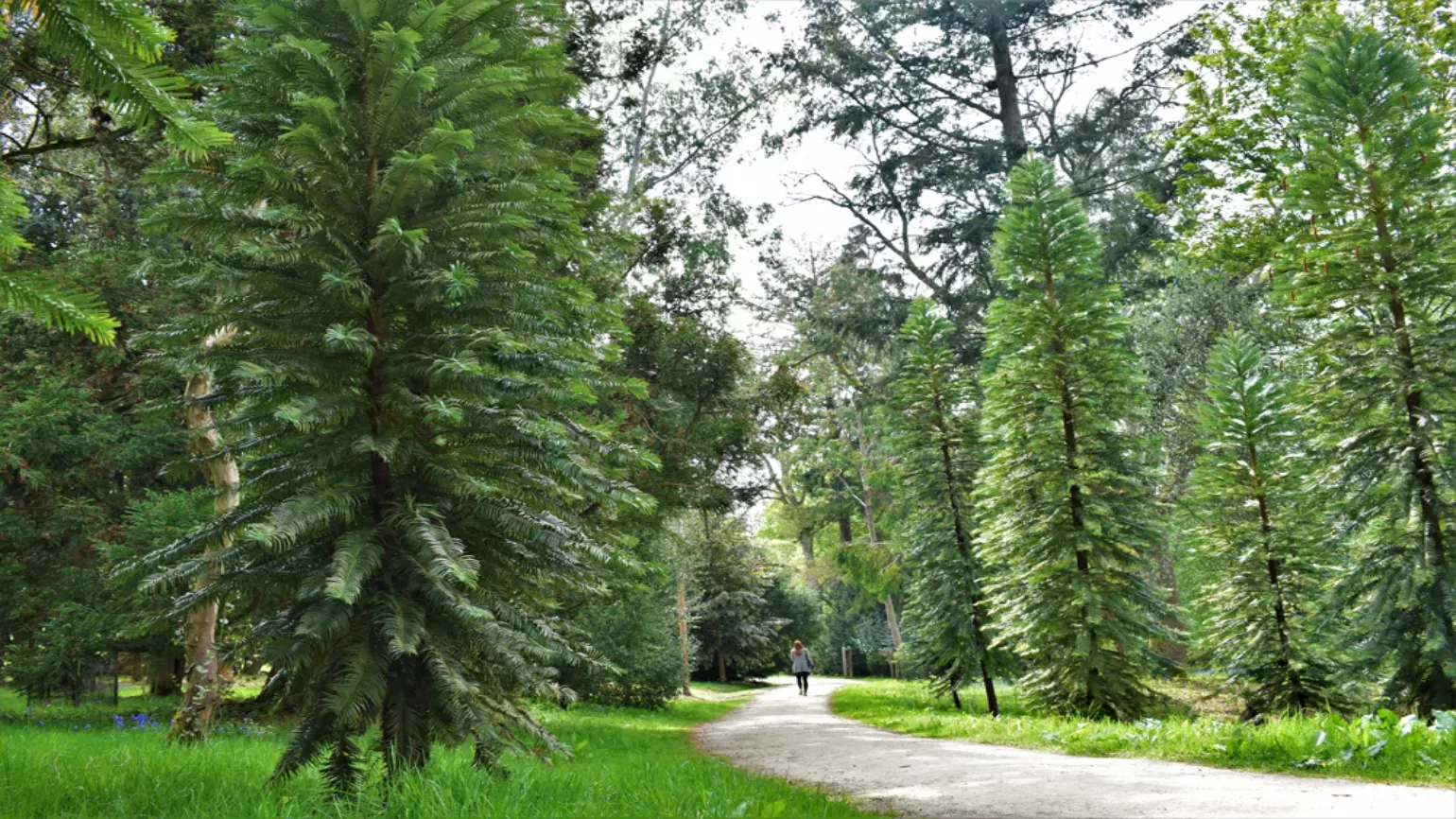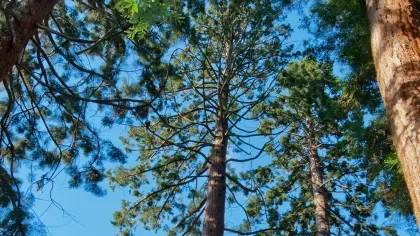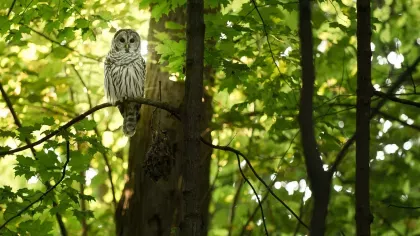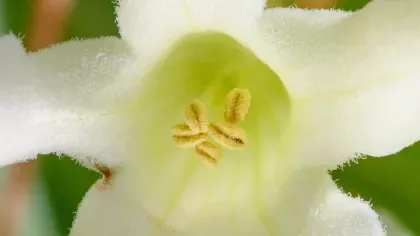8 May 2019
How to health check a tree
Senior Arborist Russell Croft talks us through the checks he makes to ensure a tree is doing well.

As a Senior Arborist at Wakehurst, my job is to look after our trees.
There are over 30 different tree species in the UK alone, but at Wakehurst we have species from all around the world.
Trees play a huge role in the British ecosystem and biodiversity. They provide an important habitat for birds, insects and other animals. They lock up our carbon helping to clean our air and provide us with oxygen. They also stem the flow of floodwaters and stabilise soils, helping to prevent soil erosion and landslides.
There are lots of ways of assessing the health of a tree but one of the most helpful ways to start is by understanding what the tree you are looking at should look like.
The causes of poor tree health generally fall in two categories;
Living
Bacterial and fungal pests as well as insects and larger animals.
Non-living
Chemical agents (like pollution/contamination), machinery damage, soil conditions, moisture levels and, of course, the weather.
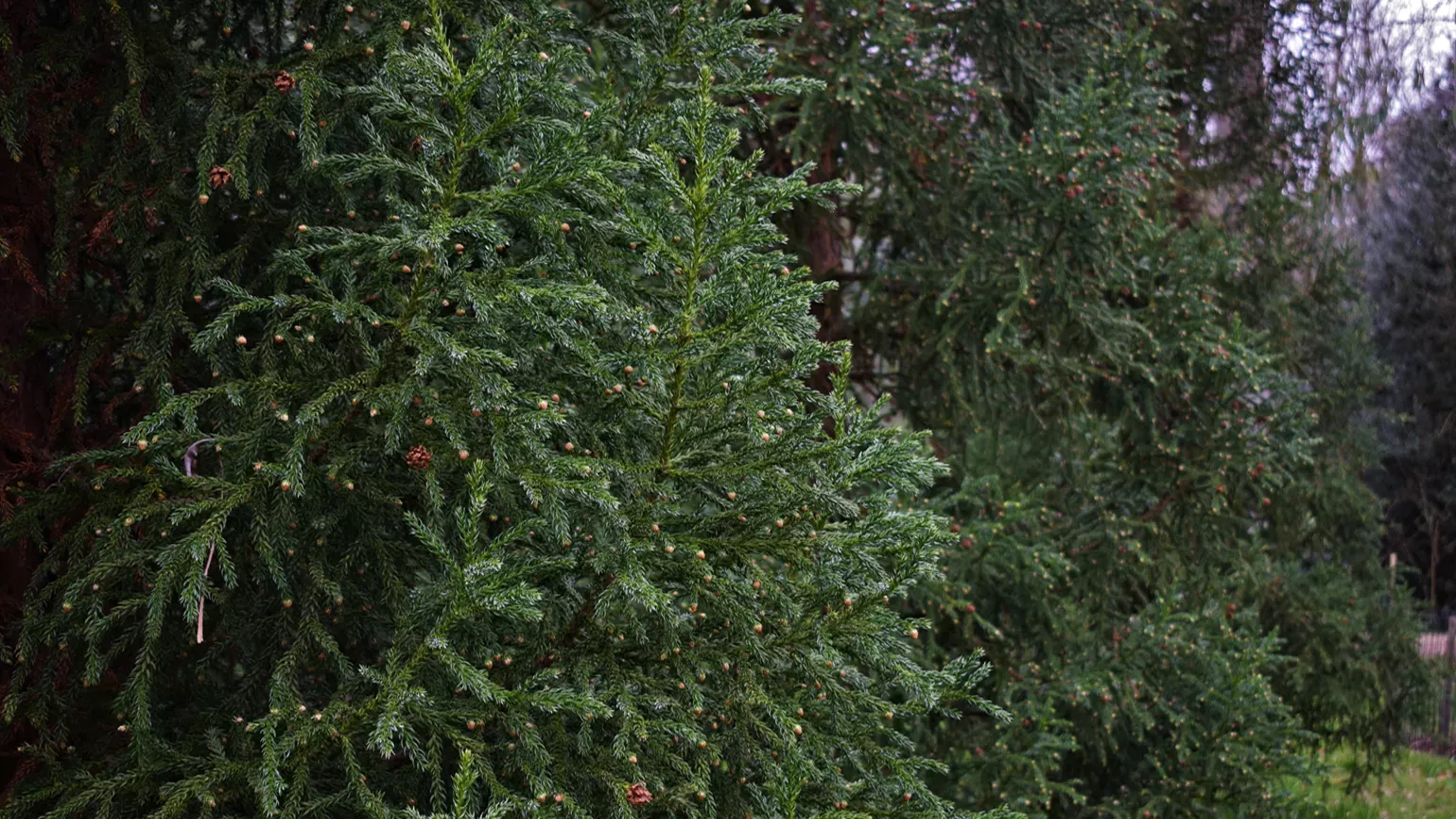
Signs to watch out for
1.Thinning leaves
When you stand under the tree, can you see blue sky?
The crown of the tree is at the top; made up of both leaves and branches that offers shade to the roots whilst absorbing the energy from the sun.
A thinning crown – or when a usually leafy tree is looking sparse and thin – could mean a pest infestation from something like Oak processionary moth (OPM; Thaumetopoea processionea), or a disease like ash dieback (caused by the fungus Hymenoscyphus fraxineus), which blocks the water transport systems in trees causing leaf loss or lack of nutrients.
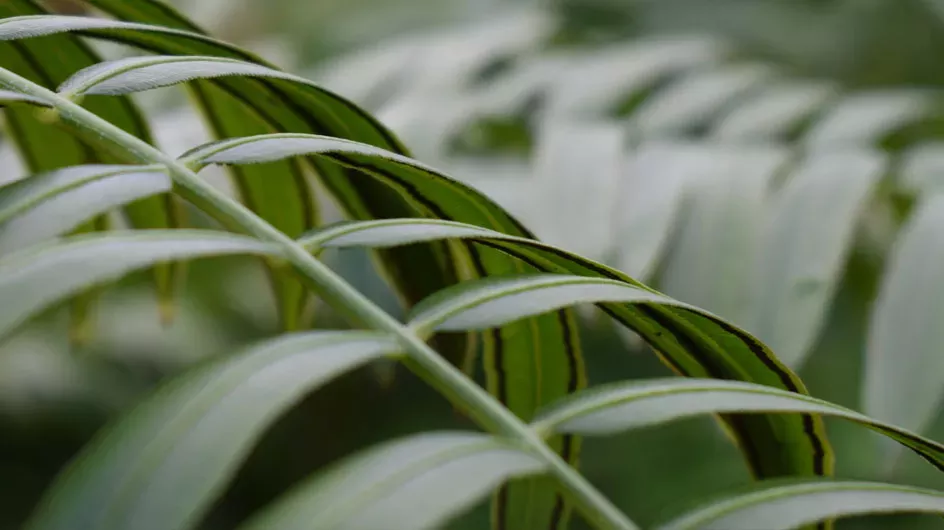
2. Discoloured leaves
You can tell a lot about the tree from the colour of its leaves.
Leaves are a fundamental part of your tree. They help convert energy from the sun into nutrients. They contain chlorophyll, which plays a vital role in photosynthesis and makes leaves green.
Do the leaves look like the right colour for the season?
Yellowing or brown leaves, or leaves falling early are signs that you need to investigate further.
Top tip: Look at the leaves to see if they are uniform in shape, size and colour because yellow (chlorotic) leaves often indicate lack of nutrients or poor root function. This could be due to waterlogging, soil compaction or drought.
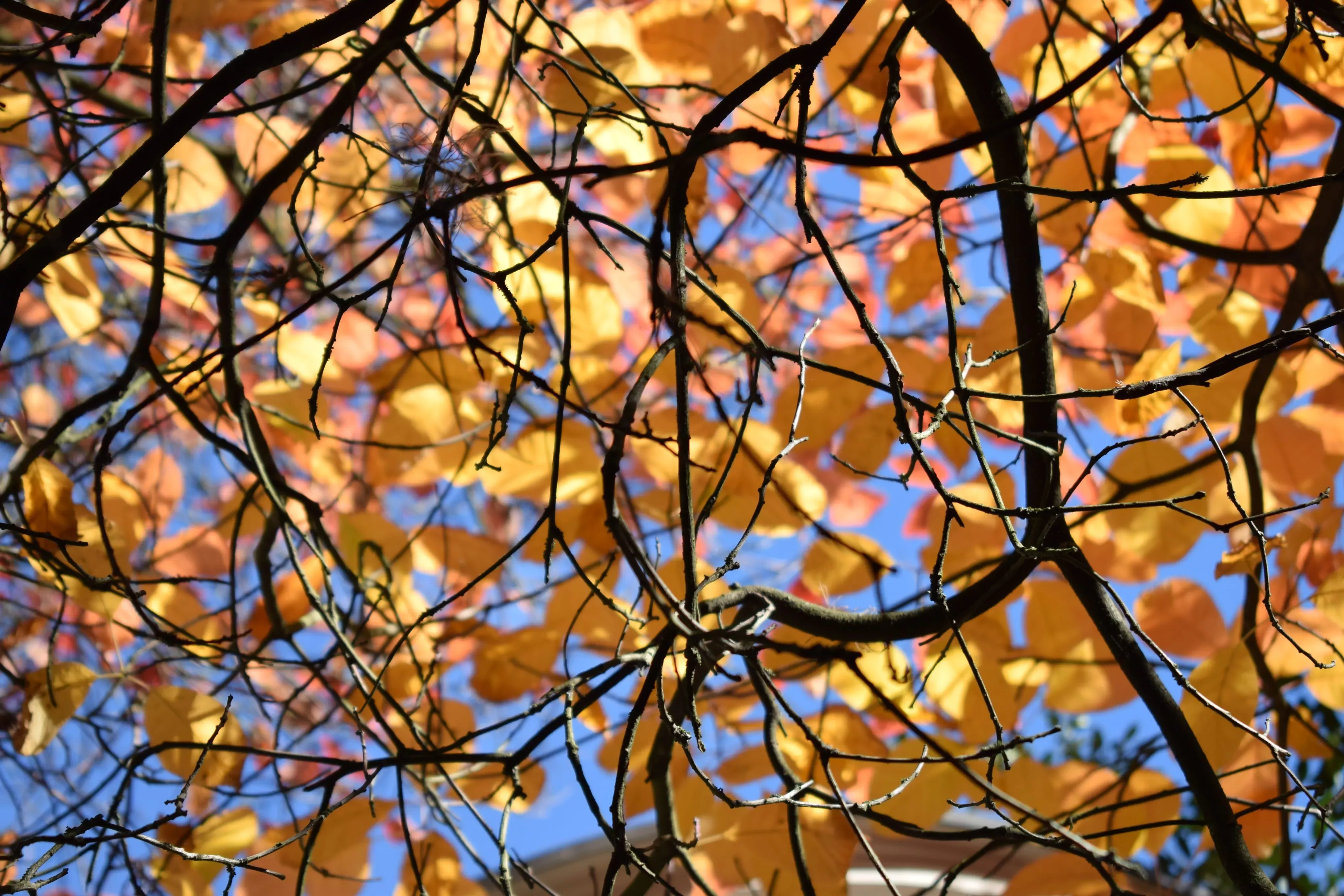
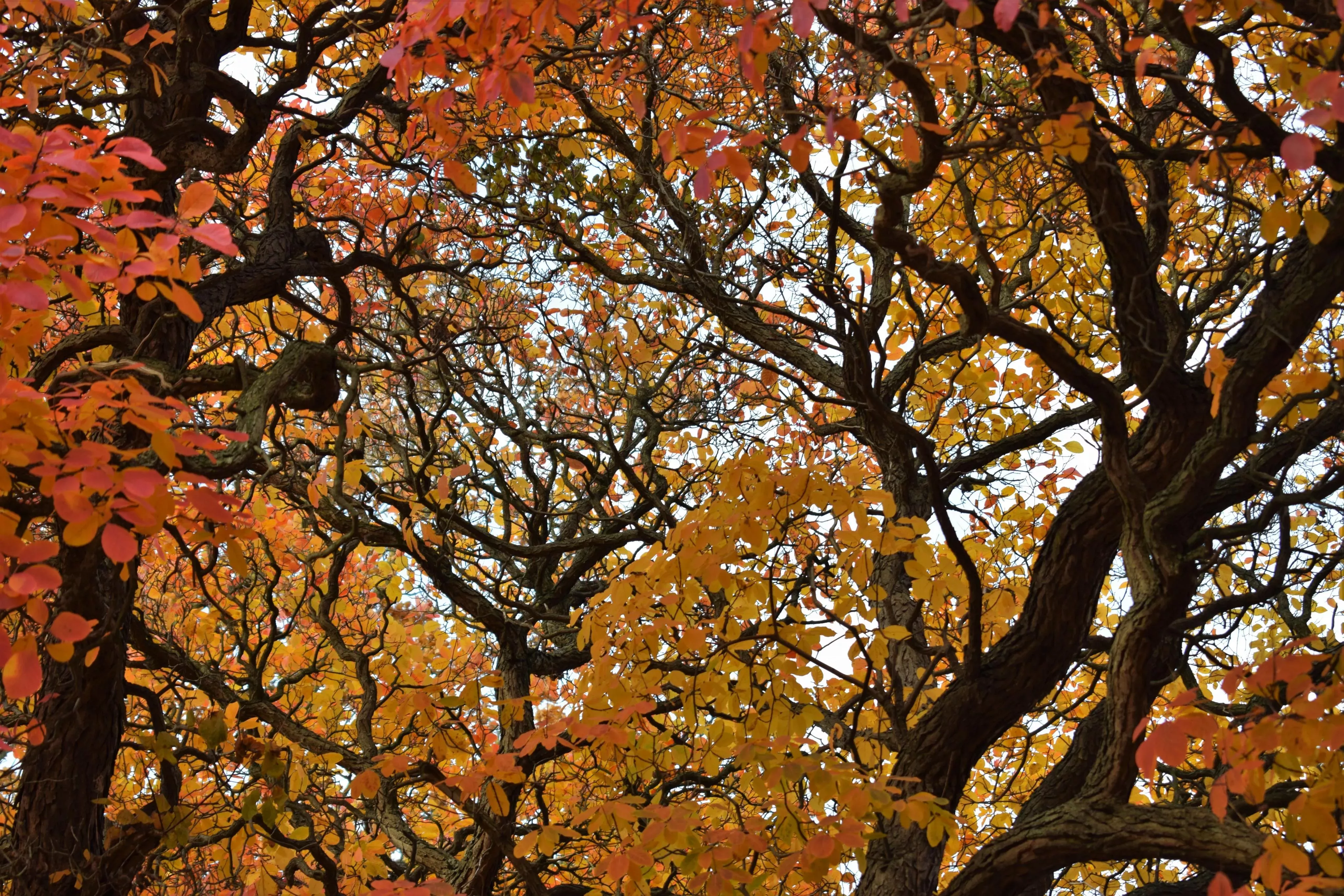
3. Crown die back and dead wood
A healthy tree should put on new growth every year, getting bigger in both trunk and branch size.
Have a look at the branch tips on the crown of the tree.
If you spot lots of small dead twigs at the end of the branches or whole branches dying off, then that’s a big indicator that the tree is stressed.
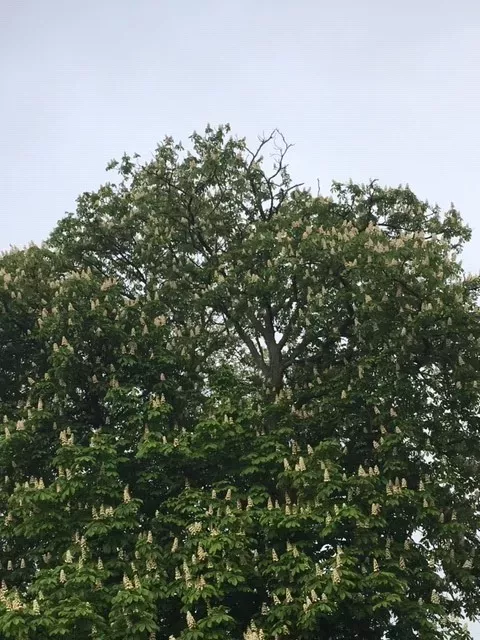
4. Dead, flaking bark
Did you know that trees can bleed?
The bark protects the tree from lots of external stresses like storms, pests and diseases.
If there’s a sappy-like liquid oozing from the bark at the stem, or trunk, then that might tell you there’s quite a problem within the cambium (a layer of tissue that helps the tree grow by adding another layer of wood).
If you spot a bleed, that could mean a bacterial or fungal infection, or an infection from Phytophthora, which are microscopic, fungus-like organisms that can cause dark fluid to ooze from the bark and running down the tree trunk.
Or, it could be an insect like the great spruce bark beetle Dendroctonus micans, that causes the tree sap to run out of the holes it makes as it enters the trunk, causing damage to the cambium.
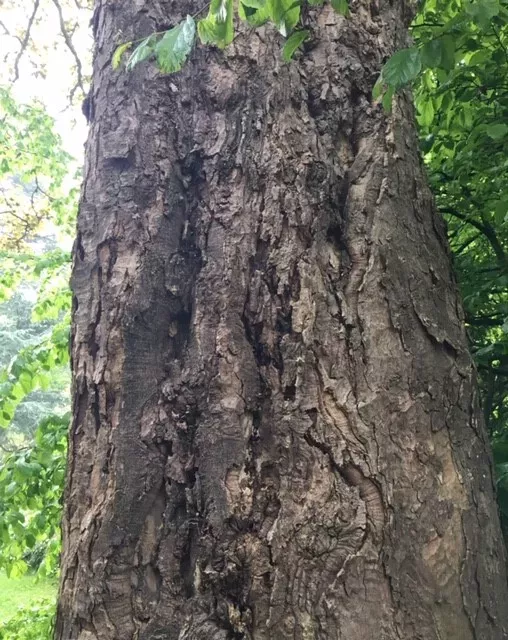
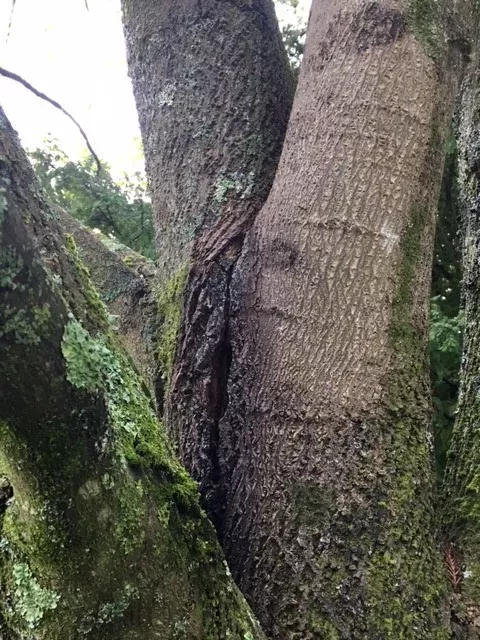
5. The trunk
The trunk is a major part of your tree. It supports the crown, helping the tree keep its shape and sturdiness.
Around the trunk just under the bark is the cambium and the vascular system of the tree, which runs water and nutrients between the leaves and the roots.
Keep an eye out for cavities, cracks, bulges and wounds which all indicate possible structural damage, and act as entry points for pathogens.
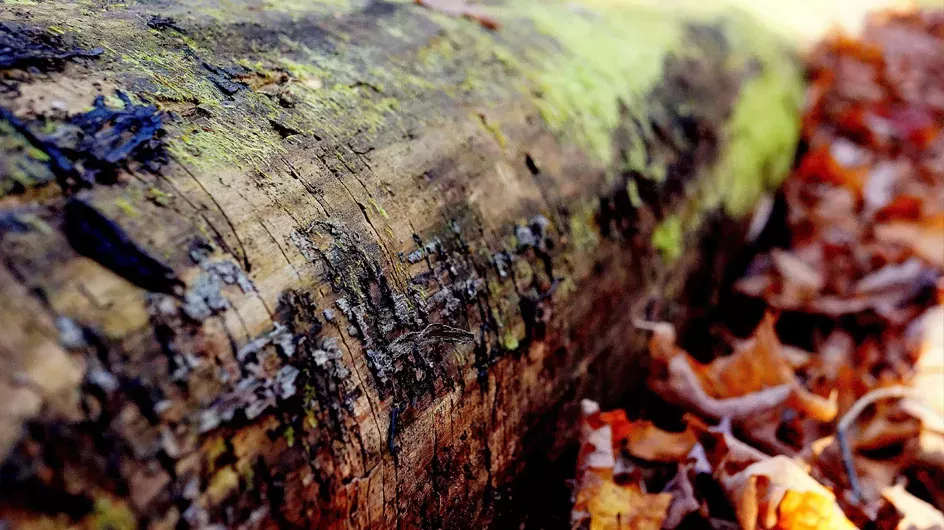
6. Roots
The roots anchors the tree to the ground and absorbs water and nutrients, which get passed up through vascular system. The larger structural roots all have fine feeding roots all coming off them.
Did you know 50% of a trees roots are in the top 6 inches of the soil?
If your roots are exposed and look damaged, or recent nearby digging has turned them up, then this risks disrupting their careful feeding system.
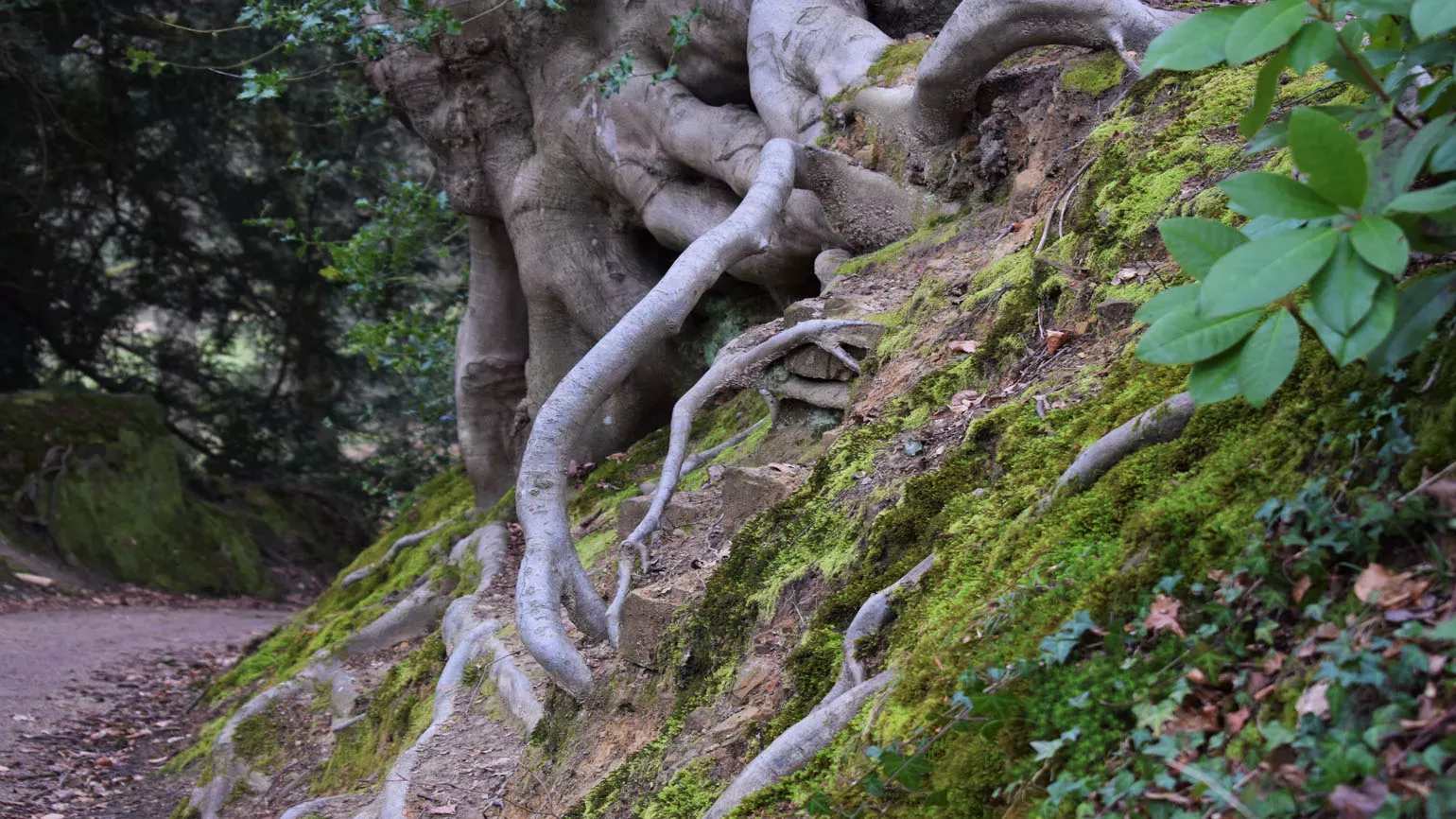
7. Fungi
Honey fungus is the common name given to several different species of fungi in the genus Armillaria and can kill the roots of many woody plants.
A mat of white fungal mycelium, black ‘bootlace’ rhizomorphs under the bark and clumps of honey-coloured toadstools that appear in late summer all indicate the fungus is present.
Trees show they are affected with dieback in the crown, discoloured leaves and early leaf drop in autumn. While this decline can go on for several years, it’s common after hot dry periods for trees to die quite suddenly.
Bracket fungi such as Ganoderma cause decay and rot in the heartwood of trees and can be commonly seen.
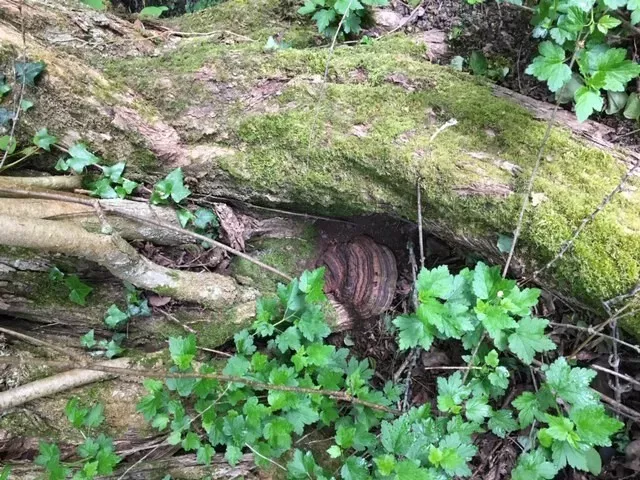
Timing is key
There is detective work involved in making the right diagnosis.
These signs are just the starting point for further investigation, and often knowledge of the tree’s recent history can help this process.
You can keep track of the speed of any of these symptoms and how fast your tree is declining to tell a professional arborist what’s going on.
Knowing what time of year to look for insect pests or when fungi are visible gives you a good guide as to when you might want to do a more targeted inspection.
For example, when looking at a beech tree (Fagus sylvatica) you may notice lots of dead wood or twigs on the ground. That could mean the Meripilus giganteus fungi is present. But you could only confirm this from June to September, as that’s when the fungus is in season.
Have a go at spotting some of the signs of tree health in your own garden.
These are general tips for you and your family to learn more about trees.
This is not to replace a professional arborist inspection. If you are concerned about a tree, then you must refer it to an approved and qualified Arboriculturalist. Please see the Arboricultural Association for further information.
